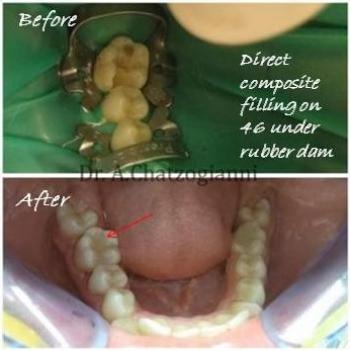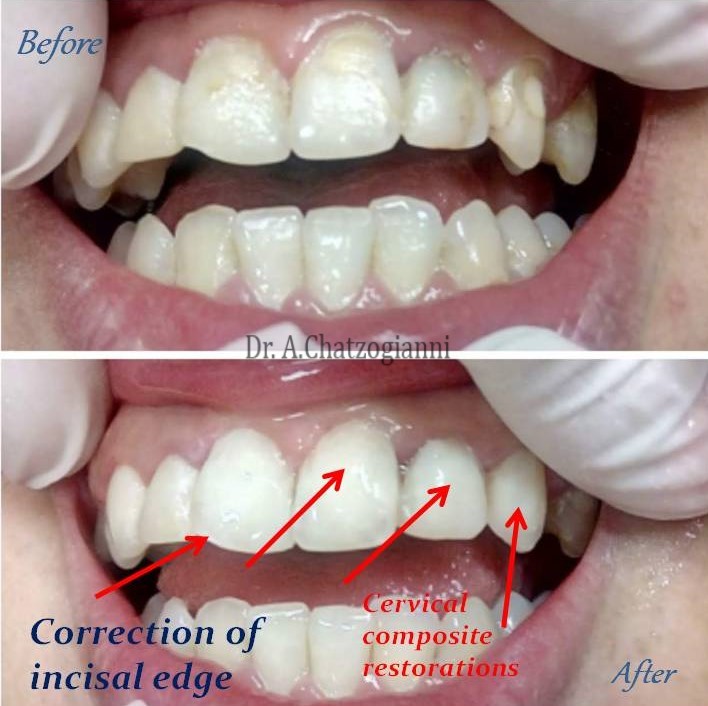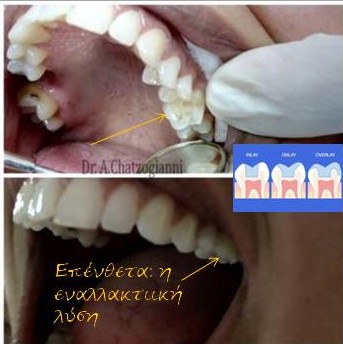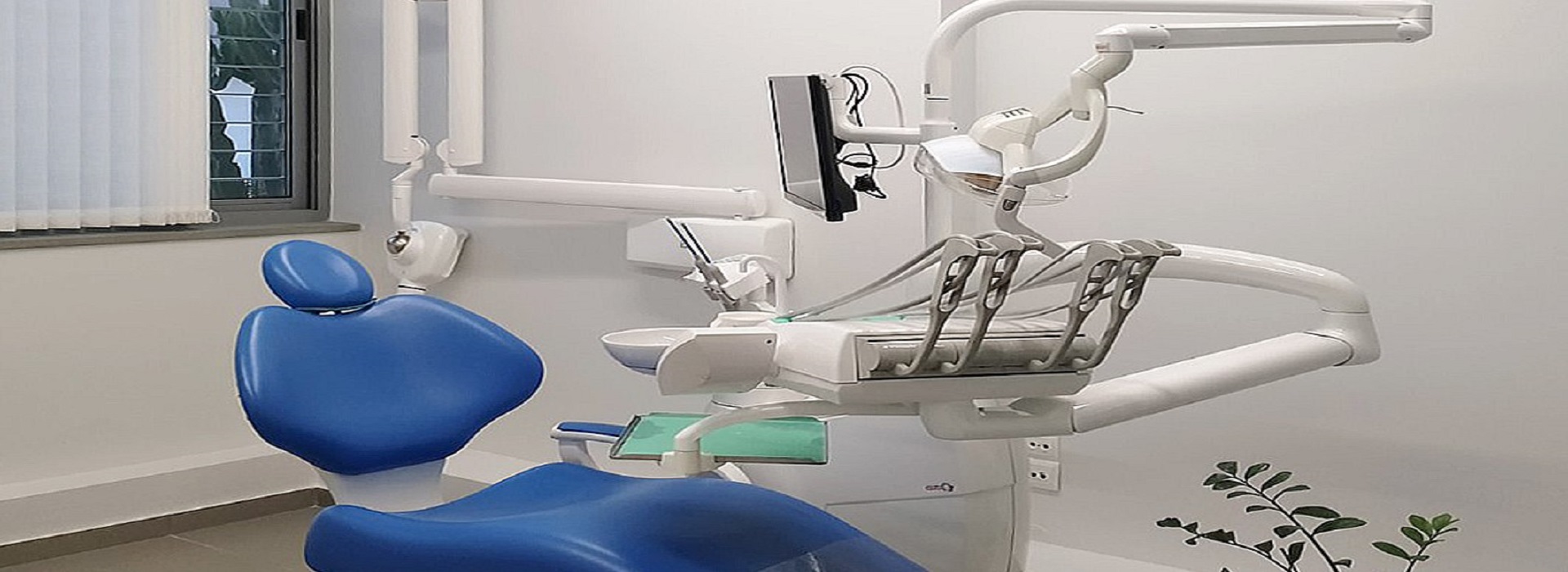These are colloquially called “restorations”, also known as “fillings” to all of us. It is about the most common restorative work done by dentists, in order to repair tooth damages caused by caries.
It is about a common injury which starts like a tiny hole on the surface of the tooth which gradually grows by infecting the hard tissues of the tooth, namely the enamel and the dentin. Sometimes caries can “work” from the inside out.
Caries are caused by the acids produced by oral microbes when they metabolize carbohydrates (e.g. sugar) from our foods. Acids dissolve the dental substance, creating a cavity which grows, for as long as it is not treated.
If the damage has not reached in the pulp, and destruction in the tooth structure is limited, a filling is usually sufficient to treat caries, thus replacing the damaged enamel and the dentin of the tooth. Otherwise, if the tooth is not sealed in time, the caries will infect the nerve and gradually the tooth will be completely destroyed, so what will be needed is a root canal therapy – endodontic therapy.
 TYPES OF FILLINGS
TYPES OF FILLINGS
There are five main types of restorations: amalgam or black filling, composite resin, bonding, onlay and sealants (preventive restorations).
AMALGAM
The amalgam, is a material which dentists used to use because of its resilience. However, due to its aesthetic effect, its use has been minimized. In addition, amalgam fillings have been accused by many as harmful to health, especially when placed or removed, because of the mercury they contain.
COMPOSITE RESIN
The composite resin or now called white filling has almost completely replaced the black fillings. It is a durable and flawless material which offers a high aesthetic result due to the colour palette and the available shades. After removing the carious part of the tooth, the composite resin is adjusted, thus restoring the tooth to its original shape and function.
AESTHETIC RESTORATIONS
 Also, the composite resin can be used to change and / or improve the size, shape, length, colour and inclination of the teeth.
Also, the composite resin can be used to change and / or improve the size, shape, length, colour and inclination of the teeth.
Often, there are gaps between the teeth which trap food or create an aesthetic problem. This is either because the teeth are sparse by nature, or because the gums have receded, due to periodontitis. In any case, it is possible to close these gaps and improve the patient's smile. The technique used is called bonding (resin veneers). The dentist appropriately builds the teeth from the side with composite resin and thus does not need to grind the teeth and place the caps. The bonding technique has developed a lot in recent years, and is gaining ground in the field of cosmetic dentistry.
 ONLAY
ONLAY
Often, the destruction of the tooth is quite extensive, so an amalgam or composite resin filling is not capable of fully resolving the problem. In this case, there is the solution of the onlay. It is a composite resin or porcelain restoration, made in the dental laboratory and permanently bonded to the tooth by the dentist. In cases where the destruction of the tooth is too extensive, so that there is a risk of tooth decay, the restoration is done with a crown (cap).
Sealants (preventive restorations of holes & slits)
If we take a closer look at our teeth, we will find that they are not composed of smooth flat surfaces, but have a complex morphology. Particularly in the back teeth, the horizontal surfaces involved in mastication have intense slits, grooves and dents. The sealants are therefore preventive restorations of the holes and slits created on the chewing surfaces of the back teeth and are aimed at preventing the appearance of caries in these areas. The sealant partially fills up and smooths the grooves of the teeth, so that they are easier to clean and reducing the risk of caries. It is a very effective method which is mainly used in children, as soon as the first permanent teeth come out.
For more information click the link: https://www.chatzogianni.gr/gr/emfrakseis-album


.jpg)